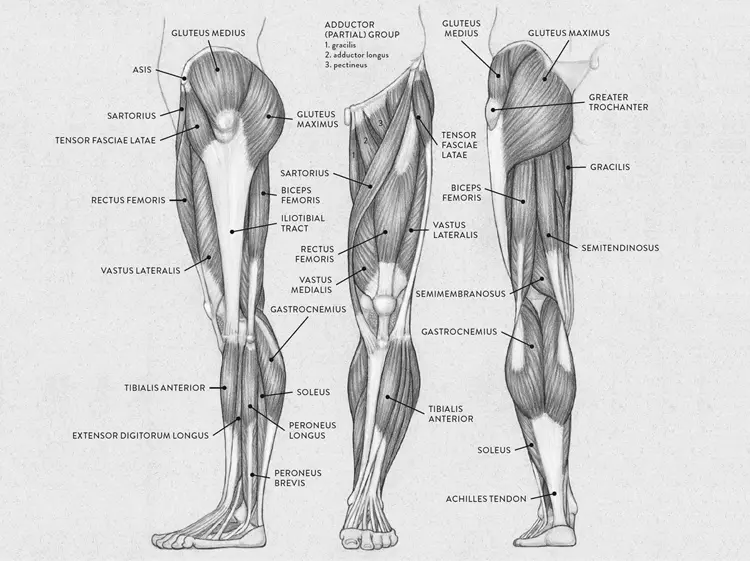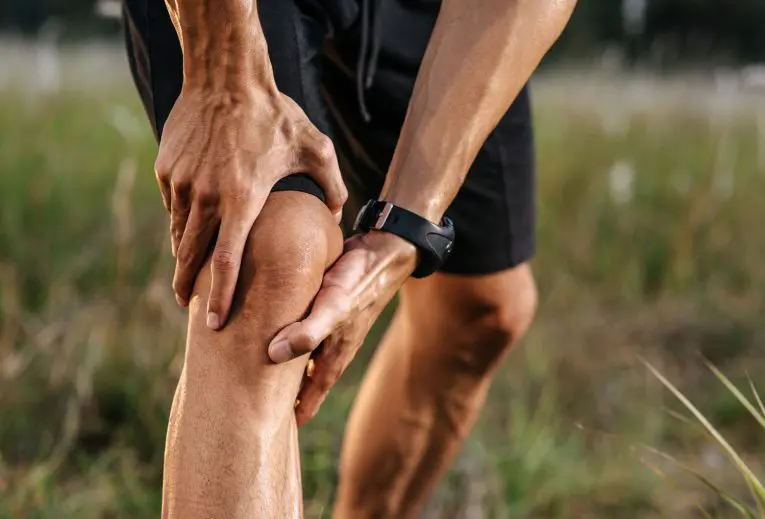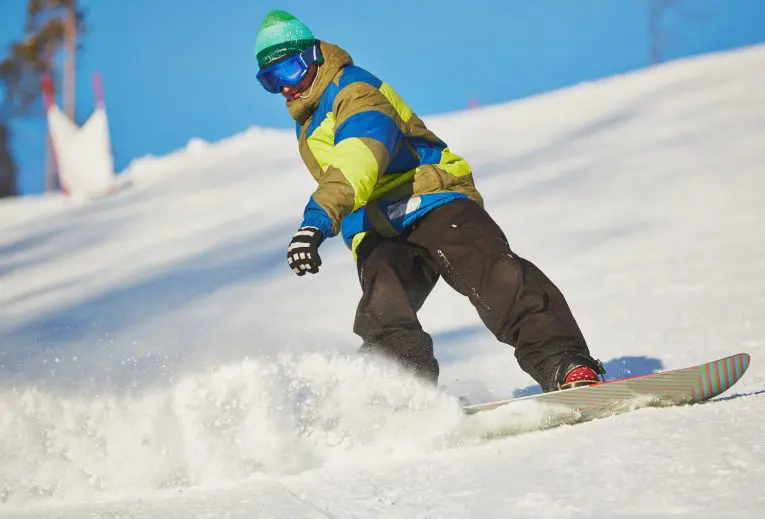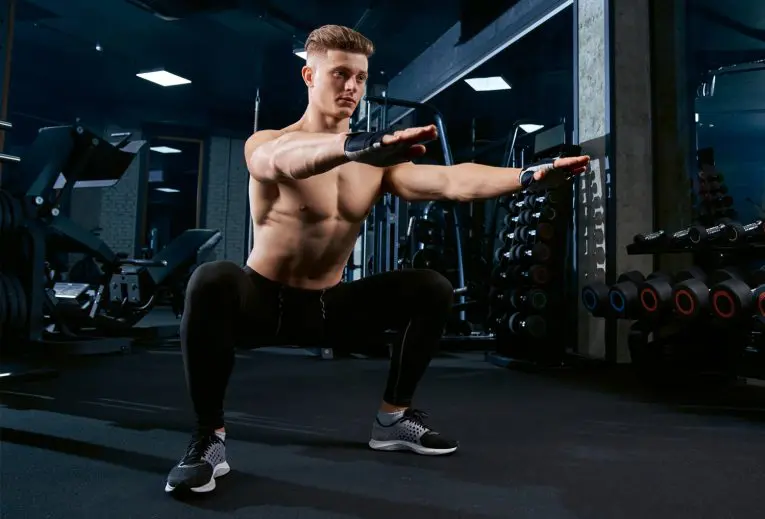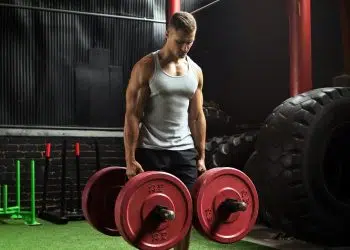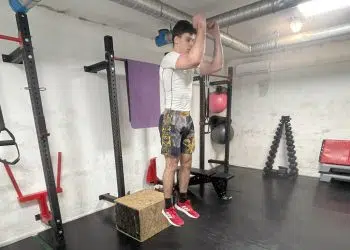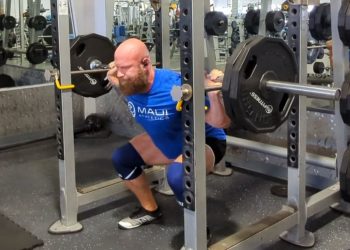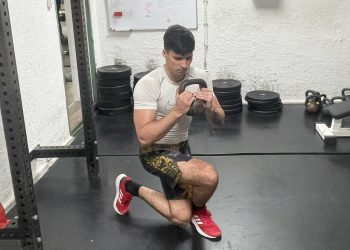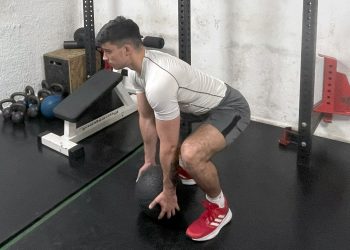The wall sit is an unusual exercise. Unlike most leg exercises, they involve no actual movement. Instead, they’re an isometric exercise, which means your muscles contract statically. There is a whole lot of tension in the working muscles, but they’re pushing against an immovable object – a wall.
Many exercisers dismiss the wall sit as too simple or too easy to be beneficial, labeling it a beginner move, but that’s a mistake. In fact, this no-frills lower body exercise is useful for intermediate and advanced exercisers too, and it deserves to be part of your lower body workout routine.
In this guide, we’re going to lift the lid on this underappreciated exercise, so you can learn why and how to do it. Plus, we’ve got some cool variations you can use to spice up your workouts.
Wall Sit Benefits
For such a simple exercise, wall sits are surprisingly beneficial. Here are the top seven reasons to include wall sits in your workouts.
1. Anywhere, Anytime
You don’t need any equipment to do the basic wall sit other than a wall or a post to lean on. That means it’s ideal for home exercisers, people who work out in poorly equipped gyms, anyone who travels, and those who want a leg exercise they can do anywhere and anytime.
2. Total Lower Body Exercise
Level Up Your Fitness: Join our 💪 strong community in Fitness Volt Newsletter. Get daily inspiration, expert-backed workouts, nutrition tips, the latest in strength sports, and the support you need to reach your goals. Subscribe for free!
Wall sits, also known as wall squats, work all of your major lower body muscles. This makes them a very time-efficient exercise. The main muscles worked when you do this exercise are:
- Quadriceps – Out of all the muscles, you’ll probably feel the most burn in your quadriceps muscles during wall sits. The quads, composed of five heads or muscles, tenses when the hips are flexed liked dropping down into a squat and extending the legs.
- Hamstrings – In contrast, the hamstrings opposite side of the quads on the thigh move when the hips are extended and the knees are in a flexed position.
- Gluteus maximus – known as the glutes for short, this is the largest muscle in the human body and is responsible for hip extension.
- Abductors – the collective name for the muscles on the outside of your hips and thighs, these muscles lift your leg out and away from the midline of your body. In wall sits, these muscles are mostly responsible for preventing your knees from falling inward.
- Adductors – These are the muscles on the inside of your thighs that draw your leg in toward the midline of your body. In wall sits, these muscles are mostly responsible for preventing your knees from falling outward.
3. Easy to Learn
Squats, lunges, deadlifts, and step-ups are great leg exercises but are also harder to learn. They involve several joints moving together and require skill and coordination to do correctly. Wall sits involve no movement, which makes it easy to learn. Because of this, they’re ideal for beginners and when you are too tired to do more complex exercises, such as at the end of your usual leg workout.
4. Less Joint Wear and Tear
Most leg exercises involve large knee joint movements. Done repeatedly or with heavy weights, this can cause a lot of joint wear and tear, particularly of the hyaline cartilage that protects the ends of your bones.
Wall sits involve no movement, and that means less joint stress. This makes them ideal for anyone who currently has or wants to avoid knee pain.
5. Easy to Modify
Wall sits are often viewed as a beginner’s exercise, but they don’t have to be. You can make this exercise harder simply by pushing your back against the wall harder.
There are also several variations you can use to make this exercise challenging, even if you are an experienced exerciser.
6. Use to Improve Regular Squat Performance
Wall sits can improve your regular back or front barbell squat performance. If you have a “sticking point” where you stall when lifting weights, you can do wall sits at that knee angle to increase your strength.
In time, you should find that you can blast through your old sticking point, all thanks to wall squats.
7. Great for Skiers, Boarders, and Skaters
Wall sits are sometimes called ski squats because they are used by people who want to get fit for the slopes. Skiing, boarding, and skating all involve spending time in a partial squat position, which can be tiring. By replicating the demands of skiing, boarding, and skating, wall sits will help improve your leg strength and endurance for these and similar activities. Wall sits are also useful for cyclists and runners.
How to do Wall Sits
To enjoy the benefits listed above, you need to do wall sits properly. The good news is this is a straightforward exercise, and you’ll master it in no time!
Level Up Your Fitness: Join our 💪 strong community in Fitness Volt Newsletter. Get daily inspiration, expert-backed workouts, nutrition tips, the latest in strength sports, and the support you need to reach your goals. Subscribe for free!
How to do it:
- Find a smooth, sturdy wall to do this exercise against. Avoid rough or stony walls that will hurt your back. Also, don’t use a plasterboard wall as, if you’re really strong, you could damage it. Finally, make sure the floor is not slippery, or your feet may slide out from under you.
- Stand with your back to the wall, feet about 24 inches from the baseboard. Your feet should be between hip to shoulder-width apart.
- Lean your back against the wall and slide down until your thighs are roughly parallel to the floor. Your shins should be vertical. If they are not, move your feet until they are. Make sure your head is up, and you are looking forward. Maintain good posture throughout.
- Without resting your hands on your thighs, use your legs to push your back against the wall. Do not hold your breath as doing so will cause your blood pressure to rise. You can push as hard as you can for a short time (10-20 seconds) or simply try and stay in position for as long as you can. Hard and short will build strength, while staying in position for longer will build endurance.
- On completion, either slide down the wall and sit on the floor to rest or use your hands on the wall to help you stand up.
Wall Sit Variations and Alternatives
Standard wall sits are an effective exercise, but they can get old fast if that’s the only version you do. Here are TEN ways to make this exercise more interesting and challenging.
1. Booty Band Wall Sits
Increase glute and adductor activation by wearing a booty band around your legs when you do wall sits. To do this exercise, as well as pushing your back against the wall, also push your knees out against the resistance offered by the band. This exercise is a real butt builder!
2. Medicine Ball Wall Sits
This variation increases adductor or inner thigh muscle recruitment. Place a light medicine ball between your knees, descend as usual, and then squeeze your knees in against the ball as you press your back into the wall.
3. Stability Ball Wall Sits
Working against a rough wall? Protect your back by using a stability ball. Place the ball between your back and the wall and then squat down as normal. Press your back into the ball and hold it in place with your legs. Push hard! As well as protecting your back, this exercise also helps you maintain a neutral spine and increases the balance demand of this exercise, albeit only slightly.
4. Weighted Wall Sits
While you can make wall sits harder just by pushing more with your legs, you can also make this exercise more challenging by holding dumbbells in your hands, arms down by your sides, or a weight plate in your hands. Alternatively, you can hold a single dumbbell or kettlebell in front of your chest, just like you are doing goblet squats.
5. No Wall, Wall Sits
No wall? No problem! You can even do this exercise in a wide-open space with nothing to lean against. Just adopt your usual squat stance and descend until your thighs are at least parallel to the floor. Hold this position for as long as you can.
6. Wall Sit Squat-Off
Challenge your training partner(s) to a wall sit squat-off to see who will buy the post-workout protein shakes! Set up side by side and descend at the same time. See who can last the longest.
7. Wall Sit / Squat Jump Superset
Looking for a bodyweight-only way to work your legs really hard? Try this superset! Do wall sits as usual and then, on completion, do a set of squat jumps. Simply squat down and leap up into the air, using your arms for extra momentum. Land on slightly bent knees and repeat. And yes, that burning in your legs is entirely normal!
8. One Legged Wall Sit
Double the difficulty of wall sits by using just one leg at a time. One-legged wall sits are MUCH more challenging than the standard version. Make sure you work both legs equally.
9. Lateral Wall Sit
This is another single-leg variation that also emphasizes your abductors. Stand sideways on to a wall and lift your innermost foot off the floor. Bend your outer leg and descend into a squat.
Use your outermost leg to push your shoulder into the wall. This is a good exercise for athletes who need to be able to dodge from side to side. Remember to work both sides equally.
10. Calf Raise Wall Sit
Wall sits work all of your upper leg muscles, but don’t do much for your calves. Fix that by balancing on your tiptoes as you slide down the wall. Keep your heels up and your back pushed against the wall to simultaneously work your upper AND lower legs.
Wall Sits – Wrapping Up
Whatever your training goal is, and whether you are a beginner, intermediate, or advanced exerciser, wall sits are a valuable exercise that deserves to be part of your leg workout.
They might be simple, and they don’t involve any movement, but that doesn’t mean they aren’t an excellent way to work your lower body. And with ten variations to try, this exercise need never be boring. Best of all, you can do wall squats anywhere and anytime, so why not do a set now?!
Interested in measuring your progress? Check out our strength standards for Goblet Squat, Deadlift, Hip Extension, and more.

